|
| |||||||||
| |||||||
| |||||||
| |||||||
|
| ||||||
|
| ||||||
| |||||||
| |||||||
| |||||||
| |||||||
| |||||||
| |||||||
| |||||||
| |||||||
| |||||||
| |||||||
| |||||||
| |||||||
| |||||||
| |||||||
|
| |||||||

|
|
Blacksmithing and metalworking questions answered.
|

|
Fisher-Norris Eagle Anvils1843 - 1979
The Fisher process produced an economical and very servicable anvil. They are also much quieter than wrought or all steel anvils which ring like a bell. 

Above, Late Fisher anvils with paper label. These were sold in the mid fifties thru 1979. 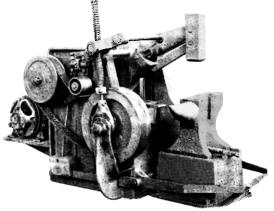

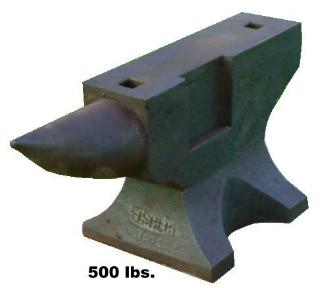 This is a special made for Chambersburg for their early helve type "Oliver" hammer (left).
This is a special made for Chambersburg for their early helve type "Oliver" hammer (left).
Left the same anvil cleaned up. Many of these anvils have survived the machines they were made to go with. Fisher-Norris also made other types of specialty anvils such as sawyers anvils and chainmakers anvils. 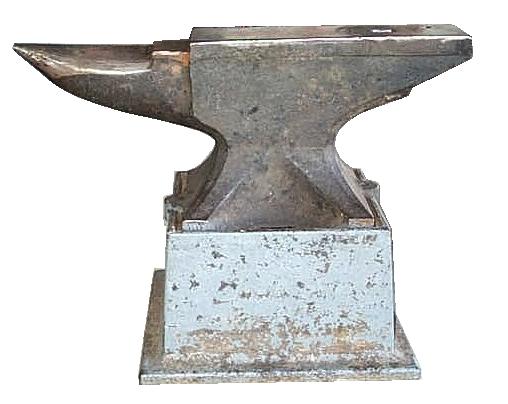 Heavy Fisher Eagle on factory stand 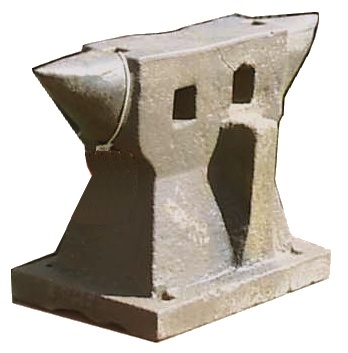

Chainmakers anvils were very specialized. The holes through the body were used to support a bottom swage or top and bottom combination for dressing the chain link at the weld. Top swages were sometimes hand held but they were also often supported on a pivot and foot operated. For more on chainmakers anvil tools see Chainmaking in the Black Country 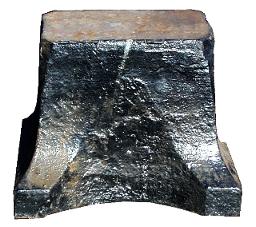
Left, a 500 pound Fisher-Norris Eagle Sawyers anvil. Sawyers anvils are a heavy flat block used to tension or "tune" big circular saw blades. The blade sets on a stand where the sawyer can rotate the blade while it is setting flat on the anvil. The Sawyer strikes the blade in a regular pattern to put tension in the metal so that the blade does not flutter or vibrate while turning. 
Right, Fisher-Norris Double Arch Anvil. These relatively rare anvils had two hardy holes and two small pritchel holes. Weight 350 pounds. (159kg) These were probably used in a factory situation where a horn was unnecessary. Photo Courtesy, Steve Prillwitz. 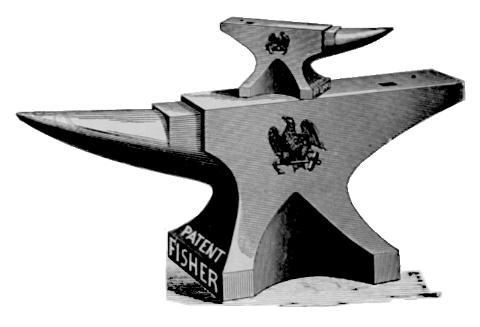
Illustration from 1890's J.H. Fall & Co., Nashville, TN Catalog. Note lack of bolting lugs found on later anvils and the more distinct Eagle logo. The catalog listed these as "Cast Steel" and the same for the inferior "Star" brand anvils made by the same methods. Fishers in the Anvil Gallery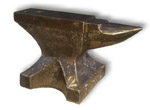 Pristine 20 pound Late Fisher Anvil
Pristine 20 pound Late Fisher AnvilVern Kelderman Collection. 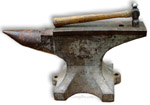 Clean 100 pound Late Fisher
Clean 100 pound Late FisherSteven Clark photo. 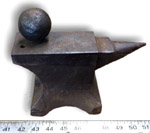 Antique 15 pound Fisher Anvil
Antique 15 pound Fisher AnvilVern Kelderman Collection. References and Links
|
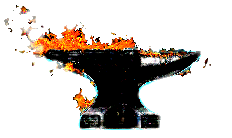


städ, incus, aambeeld, batente